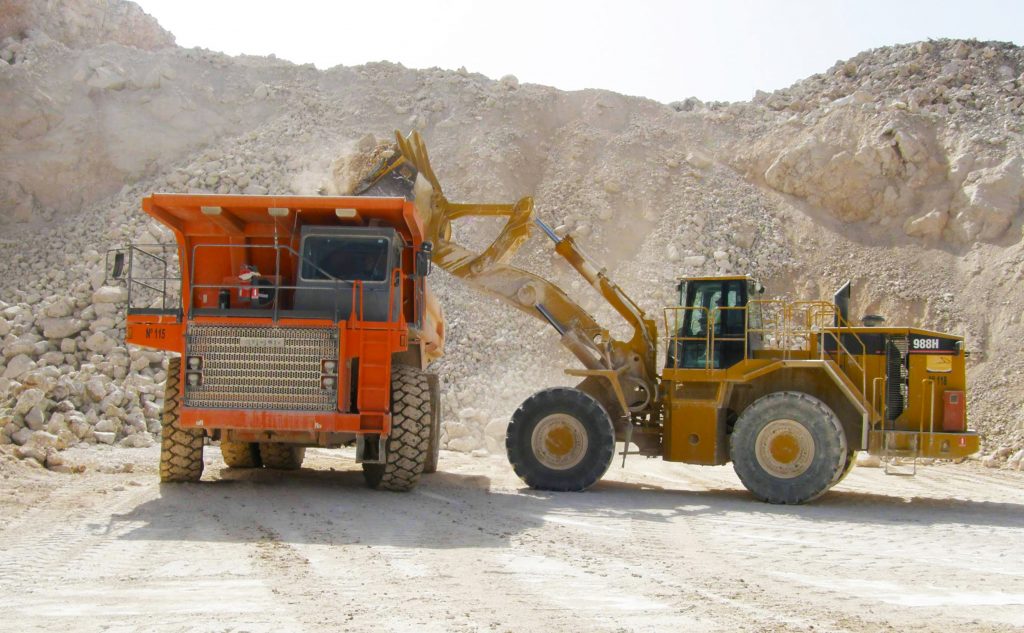Introduction
• Respirable Crystalline Silica
• Occupational Exposure to Respirable Crystalline Silica
Crystalline silica is an essential raw material of products which have an abundance of uses in industry and are a vital component in many things used in our everyday lives. It is impossible to imagine houses without bricks, mortar or windows, cars without engines or windscreens, or life without roads or other transport infrastructures, and everyday items made of glass or pottery.
For many years, it has been known that the inhalation of fine dust containing a proportion of crystalline silica can cause lung damage (silicosis). In fact, silicosis is the world’s oldest known occupational disease. However, the health risks associated with exposure to crystalline silica dust can be controlled and, by using appropriate measures, reduced or eliminated completely. It is just a matter of assessing the risk and taking appropriate action.
This first part of this Good Practice Guide is aimed primarily at employers. It is designed to help them decide whether the health of their employees, or others present in the workplace, is at risk from exposure to respirable crystalline silica. This will guide them through the process of risk assessment and provide them with some general guidance on methods for controlling exposure to respirable crystalline silica in the workplace. It also stresses the importance of continual improvement.
The glossary defines some of the more technical terms that are used in the this Good Practice Guide.
The second part of this Good Practice Guide, Task Manual, is aimed at both employers and those who actually work with materials containing crystalline silica. It provides detailed guidance on methods for safe production, handling and use of these materials.
WHAT IS SILICA?
Silica is the name given to a group of minerals composed of silicon and oxygen, the two most abundant elements in the earth’s crust. In spite of its simple chemical formula, SiO2, silica exists in many different forms. Silica is found commonly in the crystalline state but occurs also in an amorphous (non-crystalline) state. Crystalline silica is hard, chemically inert and has a high melting point. These are prized qualities in various industrial uses.
This Good Practice Guide only covers three of the different forms of crystalline silica, i.e. the minerals quartz, cristobalite and tridymite. It does not cover amorphous silica, fused silica or other silicate minerals. Quartz, cristobalite and tridymite are often referred to as types of “free” crystalline silica because the crystalline silica is not chemically combined.
Quartz is by far the most common form of crystalline silica. It is the second most common mineral on the earth’s surface and it is found in almost every type of rock i.e. igneous, metamorphic and sedimentary. Since it is so abundant, quartz is present in nearly all mining operations. Irrespective of industrial activities, respirable crystalline silica is naturally present in the environment.
Cristobalite and tridymite are not abundant in nature. However, they are found in some igneous rocks. In industrial circumstances, cristobalite is also obtained when quartz is heated (to temperatures in excess of 1,400°C), for example during the production and use of refractory materials. Cristobalite is also formed when amorphous silica or vitreous silica is heated at high temperature.

RESPIRABLE CRYSTALLINE SILICA
Not all dust is the same! For any kind of dust, there are different particle sizes, often referred to as dust fractions. When dust is inhaled, its point of deposition within the human respiratory system is very much dependent upon the range of particle sizes present in the dust.
Three dust fractions are of main concern: the inhalable, thoracic and respirable dust fractions, which are defined in the European standard EN 481. Information on this standard is given here. In the case of crystalline silica, it is the respirable fraction of the dust that is of concern for its health effects.
Respirable dust can penetrate deep into the lungs. The body’s natural defence mechanisms may eliminate much of the respirable dust inhaled. However, in case of prolonged exposure to excessive levels of this dust, it becomes difficult to clear the respirable dust from the lungs and an accumulation of dust can, in the long term, lead to irreversible health effects. Due to the fact that the health effects of crystalline silica are related to the respirable dust fraction, this Good Practice Guide will focus on the control of respirable crystalline silica.
OCCUPATIONAL EXPOSURE TO RESPIRABLE CRYSTALLINE SILICA
Occupational exposure to respirable crystalline silica can occur in any workplace situation where airborne dust, containing a proportion of respirable crystalline silica, is generated.
Respirable dust particles are so small that they cannot be seen with the naked eye. Once airborne, respirable dust takes a very long time to settle. A single release of dust into the workplace air can lead to significant occupational exposure. In fact, in situations where the air is constantly stirred-up and where no fresh air is being introduced, respirable dust may remain airborne in the workplace for days.
Occupational exposure to respirable crystalline silica occurs in many industries including quarrying, mining, mineral processing (e.g. drying, grinding, bagging and handling), slate working, stone crushing and dressing, foundry work, brick and tile making, some refractory processes, construction work, including work with stone, concrete, brick and some insulation boards, tunnelling, building restoration and in the pottery and ceramic industries.